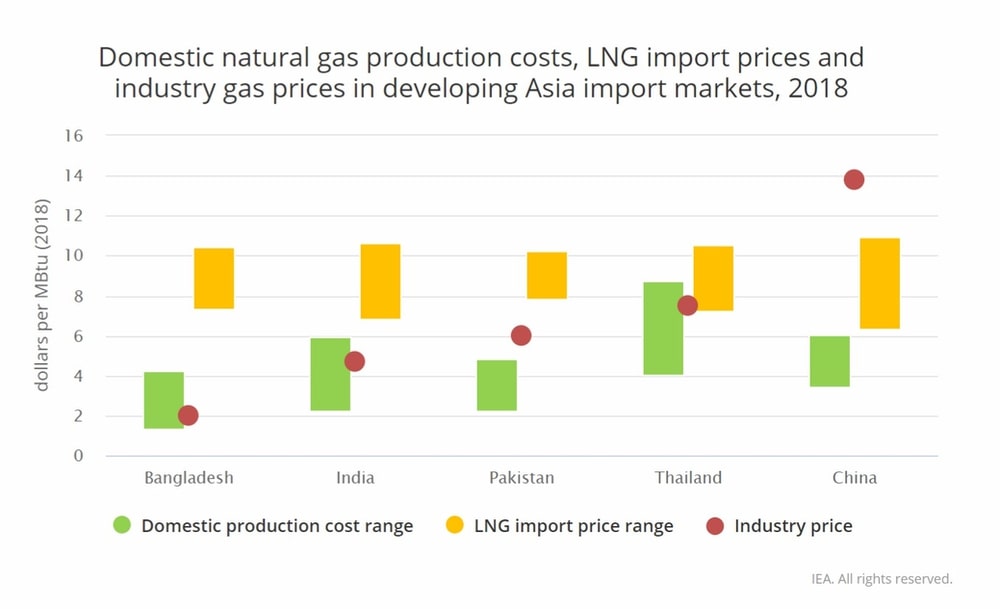Developing economies in Asia are the main engines of LNG growth. Natural gas prices in Asia significantly influence this growth. With the market share of LNG in total gas demand growing from 20% in 2018 to 40% by 2040. By 2040, the average gas molecule travels over 5,000 kilometres to reach consumers in developing Asian markets, nearly twice as far as today. [1]
40% of this global gas demand growth would be coming from China. This is propelled by the Chinese government’s goal of improving air quality by shifting away from coal. The IEA suggests strong growth in gas consumption in other Asian countries, particularly in South Asia. Bangladesh, India and Pakistan, the industrial hubs for global exports heavily impacted by natural gas prices in Asia are the main contributors to growth of the natural gas market for meeting the needs of growing populations worldwide. [2]

Source: https://www.iea.org/weo2019/fuels/utm_campaign=IEA%20newsletters&utm_source=SendGrid&utm_medium=Email#gas
Industrial use of natural gas, both as a fuel and for power generation is largely responsible for the rise in global consumption of natural gas. [3]
The pricing of natural gas largely affects the competition in global supply chains for industries producing their goods in developing countries. Emerging markets in Asia face higher costs for imports than for domestically produced gas. Even though spot gas prices fell to record lows in 2019 on the back of ample LNG supplies, over the long-term end-user prices generally seem set to rise: unless they do, LNG suppliers will be unable to recover their long-term investment costs or governments will have to continue to subsidise the cost of LNG imports.
India’s $60 Billion Investment in Gas Infrastructure
India is investing over $60 billion in developing natural supply and distribution infrastructure as it chases the target of more than doubling the share of natural gas in its energy base to 15% by 2030, Oil Minister Dharmendra Pradhan said recently. City gas distribution network will soon cover 70% of India’s population, he said. “Our government is exploring strategic partnerships for overall development of oil & gas sector. The role of private sector – both domestic and from abroad, for bringing in investments with necessary innovations for future energy landscape in the country, will remain crucial”. [4] India’s efforts to stabilize natural gas prices in Asia could reshape the energy market.


